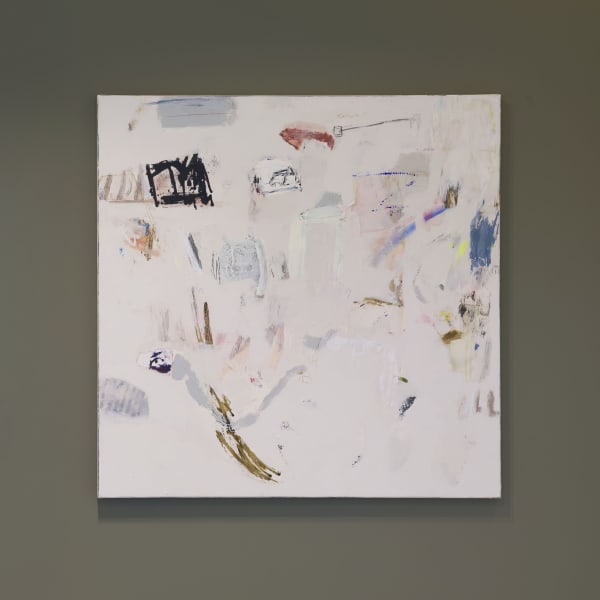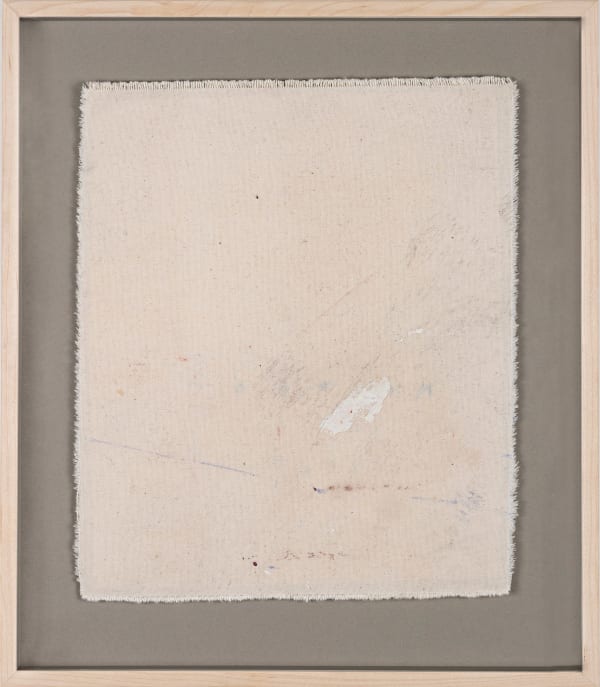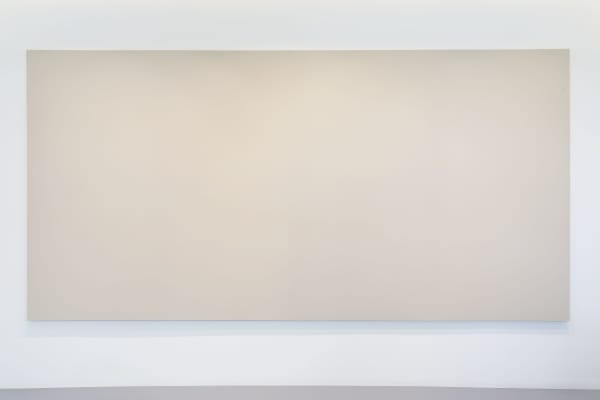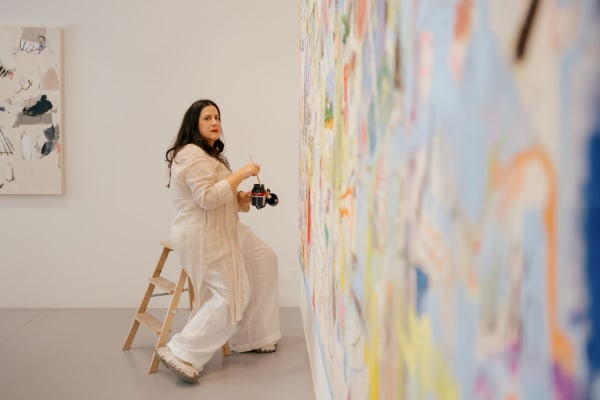Mariana Horgan: Primeiro Gesto
What compels the first gesture? A trace on stone, a scratch in wood, a finger dragged through sand. Long before language, there was the mark—a need to express something, however wordless, through movement, repetition, resistance. The mark precedes meaning, yet contains it entirely. In Primeiro Gesto, Mariana Horgan returns to this primal urge, not to romanticise it, but to examine what it still means to make a mark today.
Known for her layered, mostly monochromatic abstractions, Horgan has long approached painting as a negotiation between control and release. Her process unfolds through a continuous layering of intuitive, spontaneous outpourings followed by slower, more analytical phases — covering, scraping, adding, subtracting. Yet this exhibition marks a decisive shift in her practice. Where previously the force of gesture was contained beneath carefully composed surfaces, it now begins to emerge, gaining presence and making the paintings more alive.
Despite their abstraction, the works are grounded in the body. The gestures suggest writing, scarring, mapping, or movement. Materials include acrylic, powdered pigment, fabric fragments, and raw linen — sometimes left unstretched — reinforcing the physicality of painting as a site of live encounter.
At the centre of the gallery is a participatory installation: a raw canvas accompanied by a trolley of materials. On this blank surface, visitors are invited to leave their own marks, following specific instructions. Throughout the exhibition, the artist will return to intervene — not to complete the canvas, but to respond. This ongoing dialogue introduces a conceptual shift: the work is no longer a fixed object, but a living process shaped through exchange, contingency, and shared presence.
The installation evokes works like Abramović’s Rhythm 0 (1974) and Emin’s My Bed, transferring agency to the spectator and dissolving conventional boundaries. The gallery becomes at once studio, performance site, and evolving archive, where meaning emerges through relationship — gesture, proximity, and time.
Primeiro Gesto is not concerned with beginnings in a linear sense. It is about returning to the act of making, to vulnerability, to the gesture as a primary structure of thought. Horgan does not abandon her visual vocabulary; she refines and extends it. What changes is what she is willing to leave exposed. The final structure of the exhibition mirrors this ethos. As in her paintings — where the first mark often becomes the last — the finissage becomes the true vernissage: the moment when the work — layered, communal, and complete in its incompleteness — reveals its final state.
-
 Mariana Horgan, Light the way, 2025
Mariana Horgan, Light the way, 2025 -
 Mariana Horgan, To dream in fragments, 2025
Mariana Horgan, To dream in fragments, 2025 -
 Mariana Horgan, Back to the night, 2025
Mariana Horgan, Back to the night, 2025 -
 Mariana Horgan, The quiet that follows, 2023
Mariana Horgan, The quiet that follows, 2023 -
 Mariana Horgan, In the Mist, 2023
Mariana Horgan, In the Mist, 2023 -
 Mariana Horgan, From the Water, 2023
Mariana Horgan, From the Water, 2023 -
 Mariana Horgan, Deixa a luz entrar, 2023
Mariana Horgan, Deixa a luz entrar, 2023 -
 Mariana Horgan, Vulnerable, 2025
Mariana Horgan, Vulnerable, 2025 -
 Mariana Horgan, Aware, alive, 2025
Mariana Horgan, Aware, alive, 2025 -
 Mariana Horgan, Silent landscape , 2025
Mariana Horgan, Silent landscape , 2025 -
 Mariana Horgan, The crack of the day, 2025
Mariana Horgan, The crack of the day, 2025 -
 Mariana Horgan, 2025
Mariana Horgan, 2025 -
 Mariana Horgan, Coming home, 2025
Mariana Horgan, Coming home, 2025 -
 Mariana Horgan, Ritmos do nada, 2025
Mariana Horgan, Ritmos do nada, 2025 -
 Mariana Horgan, Eco, 2025
Mariana Horgan, Eco, 2025 -
 Mariana Horgan, Written poems, 2025
Mariana Horgan, Written poems, 2025



















